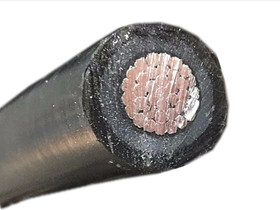The SAC (Spaced Aerial Cable) to ICEA S-66-524 is a type of covered conductor used for overhead power distribution. It's intended for aerial installations where conductors are supported by insulators and spacers. Unlike fully insulated cables, SAC cables don't have a voltage rating themselves; instead, their performance depends on the dielectric compatibility of the entire system, including the insulators and spacers used.
Key Specifications & Construction
- Conductor: Stranded, compressed, hard-drawn aluminum (Class 2).
- Conductor Shield: An extruded semi-conductive layer of cross-linked polyethylene is applied over the conductor.
- Insulation: Cross-linked polyethylene (XLPE), typically natural in color, serves as the primary insulation.
- Sheath: The outer layer is a track-resistant XLPE (black), providing resistance to environmental factors.
- Standards: The cable adheres to the ICEA S-66-524 standard, with construction also aligning with GB/T 14049 (equivalent to IEC 60502-2).
- Service Temperature: Rated for normal service temperatures of 75°C (for thermoplastic PE) or 90°C (for XLPE).
Application
SAC cables are primarily used for distributing electrical energy in overhead installations. They are installed on insulators or spacers that are rated for the specific service voltage. Because the cable itself is considered a 'covered conductor' rather than a fully insulated cable, its performance relies on the entire system of conductors, insulators, and spacers. This makes it a cost-effective solution for improving the reliability of overhead lines.

